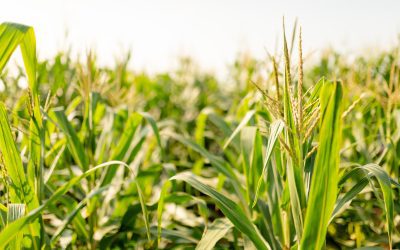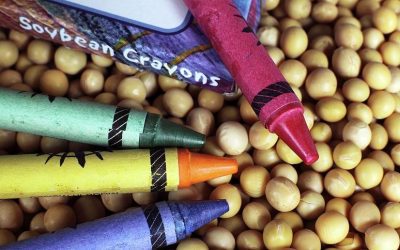On Oct. 28 the National Corn Growers Association (NCGA) announced the Consider Corn Challenge III winners at the Advanced Biofuels Leadership Conference in San Francisco, Calif. The six winners were chosen because their technologies can improve a product or process, scale-up and produce biobased materials from field corn.

“We know we produce an affordable, abundant and sustainable crop that can be used for a variety of uses and applications, which is why we held the contest,” said NCGAMarket Development Action Team (MDAT) Chair and Iowa farmer Bob Hemesath. “The value of corn as an industrial feedstock continues to improve thanks to advancements in technology, production and logistics efficiency. Corn is the perfect solution for biobased products, especially as society becomes increasingly interested in more sustainable products.”

The six winners of the Consider Corn Challenge III are the National Renewable Energy Laboratory (NREL) in Golden, Colo., BioAstra Technologies from Quebec, Canada, Catalyxx of Chesterfield, Mo., Danimer Scientific based in Bainbridge, Ga., Låkril Technologies out of the University of Minnesota, and Sylvatex from San Francisco, Calif.
The total prize pool was $150,000, split equally between winners.
Two of the contest winners, Catalyxx and Låkril Technologies, are companies that the Indiana Corn Marketing Council (ICMC) Board of Directors decided to invest in this fiscal year. ICMC New Uses Consultant Julie Ohmen was present when NCGA announced the Consider Corn Challenge III winners.
“ICMC’s strategic direction to create value through new uses for Indiana corn farmer’s includes expanding market opportunities for corn-derived sugars and ethanol that create bio-industrial ingredients that are sustainable,” Ohmen explained. “Our engagement with Låkril and Catalyxx are examples of how our board of directors is committed to investing checkoff funds to drive demand that will provide a return to Indiana farmers and rural communities.”
Catalyxx CEO Joaquin Alarcon said his company’s mission is to “become the world leader in catalytic chemistry that will allow the substitution of petrochemical products, traditionally made from crude oil, for the same molecules produced from renewable sources.”
Alarcon added that the Catalyxx process convertsethanol into higher alcohols efficiently through chemical catalytic conversion. The technology will allow utilization of existing ethanol assets by providing a “bolt-on” process to produce a biofuel to substitute diesel.
Catalyxx creates a bio-based n-butanol and other longer-chain linear alcohols from ethanol. This n-butanol is used to make other chemicals such as butyl acetate and butyl acrylates, which are valuable as a solvent or as an ingredient in formulated products such as cosmetics. The alcohol mix can be used for diesel and marine fuels.
Replacing petroleum-derived acrylics
Låkril Technologies, a Chicago-based start-up, announced it has licensed catalyst technology from the University of Minnesota to convert corn-derived lactic acid into bio-based acrylics that provide at least a 35 percent CO2 reduction from petroleum-derived acrylics. Bio-acrylic acids can be used to make super absorbers in hygiene products and diapers and for bio-acrylate polymers in paints and industrial coatings systems.
Låkril Technologies plans to commercialize sustainable acrylics at prices that compete with petroleum using traditional chemical refining approaches.
“Bio-based acrylics have long been sought by producers and end users, but routes leading to cost parity at scale with today’s petrochemicals have not been found before this discovery,” said Låkril President Chris Nicholas. “Our thermochemical technology provides outstanding yields of bio-based acrylics from lactic acid allowing us to achieve competitive economics with petroleum-based products.” Nicholas attended the ceremony in San Francisco to accept the Consider Corn Challenge III award and provide his vision of corn-based lactic acid reducing carbon while expanding markets for up to 700 million bushels of corn. The bio-acrylics breakthrough was invented at the University of Minnesota with funding from the NSF Center for Sustainable Polymers (CSP), a National Science Foundation Center for Chemical Innovation focused on sustainable polymer research.
“Our goal from the beginning has been to give sustainable materials a competitive edge by making them at an incredibly low cost, such that the transition to bio-derived products is effortless for consumers and end users,” said Paul Dauenhauer, a professor and the MacArthur Fellow at the University of Minnesota. “With conventional materials made from corn, we remove economic and technical barriers to the sustainable materials economy.”
University of Minnesota professor and CSP Director Marc Hillmyer added, “The bi-functional catalyst discovered in the Dauenhauer laboratory for the lactate-to-acrylate transformation is an outstanding example of applying fundamental mechanistic understanding to an important societal problem. Efficient transformations of renewable resources to commonly used polymers will continue to play a critical role for a sustainable future in this space.”
Låkril Technologies has secured research funding from ICMC and the Minnesota Corn Research and Promotion Council (MCR&PC). These research funds come from the farm families of Minnesota and Indiana through corn checkoff investment. The funds enable the company to establish a laboratory and advance the initial discovery toward commercialization.
“Minnesota Corn is proud to partner with Låkril on their efforts to expand market opportunities for corn-derived sugars and ethanol and contribute to the increased sustainability of many paints, coatings, adhesives and other polymers,” said MCR&PC Chairman Brandon Fast.
Winners create new uses for corn
Previous winners of the Consider Corn Challenge contests have scaled up to the next phase of development, received additional grant funding, entered into joint agreements and obtained registration for state biobased production incentives. If all 15 winners of the Consider Corn Challenge I, II & III reached full commercialization with products available in the marketplace, the potential for additional corn demand could be approximately 3.4 billion bushels.
“This contest allows us to be more innovative in meeting the needs of our customers, who want more sustainable, biobased products,” Hemesath added. “Farmers have made great strides over the years to utilize the technology that allows them to grow more on less land using fewer resources per bushel. There is enough corn grown to be able to meet the needs for food, feed, fuel and new uses.” Here’s more about the other contest winners:
• National Renewable Energy Laboratory (NREL) converts acrylonitrile to carbon fiber. This creates a lightweight replacement for steel and aluminum in products like vehicles.
• BioAstra Technologies creates smart and recyclable formulations based on cellulose and PLA to make products such as plastic bags, surgical masks and phase-change materials.
• Sylvatex plans sustainable solutions made from biomass-derived oxygenates and free fatty acids useful as alternative diesel fuel or specialty chemicals for the production of cathodes used in lithium-ion batteries. This technology could help off-road diesel and cathodes for battery production.
• Danimer Scientific discovered a process to make Polyhydroxyalkanoates (PHAs) from corn oil. PHAs are biodegradable, bio-based polymers that can be used for plastics
Each winner was awarded $25,000.



